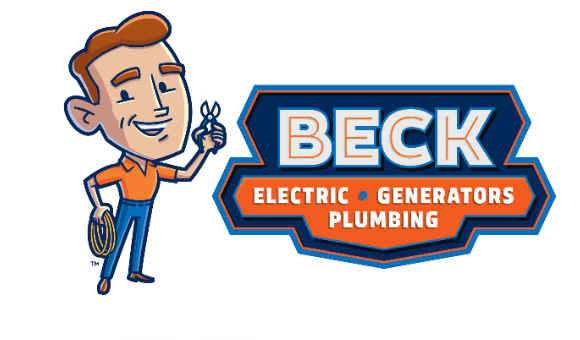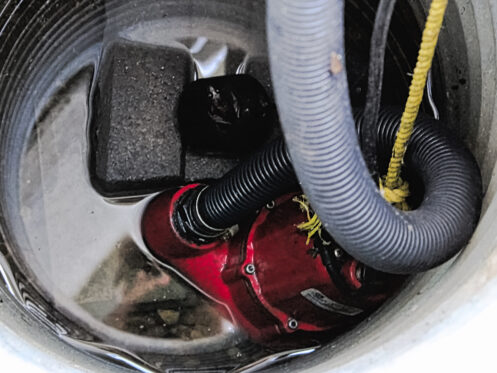Are you worried about the risk of severe spring rains and thunderstorms potentially causing your home to flood? A flooded basement or crawlspace is a much more common problem than you might think, and the only way to prevent it from happening in many cases is with a sump pump. In this article, we’ll explain exactly what sump pumps are, how they work and how to choose the right one for your home.
What Is a Sump Pump?
A sump pump is a device that is designed to prevent a basement or crawlspace from potentially flooding during heavy rains or when lots of snowmelt is present. One thing many people don’t realize is that the concrete foundation of a home is quite porous and water can easily seep through it whenever the soil around the home is waterlogged. Without a sump pump, this issue can lead to water beginning to flow up through the bottom of the foundation into the basement or crawlspace and flooding it.
A sump pump sits in a plastic basin or pit that sticks down below the level of the concrete foundation and into the dirt underneath it. Since the bottom of the sump basin rests below the foundation floor, water always starts to fill it up before it has a chance to seep through the foundation. As soon as the basin begins to fill with water, it causes the sump pump’s switch to activate and the unit to turn on and begin pumping all of the water out and away from the home. As long as the sump basin is large enough and the sump pump is the proper size and still working effectively, it will pump the water out fast enough that the basement or crawlspace can’t ever flood.
Inside a sump pump is an impeller that spins on a rotating shaft and creates a centrifugal force that draws water up into the pump and then out of the house through a series of pipes. As the pump draws water out of the basin, it causes the pressure in the surrounding soil to decrease. This leads to more water continually rushing in to balance out the pressure, which slowly draws most of the water out of the ground underneath and around the foundation.
Most sump pumps have either a tethered or vertical float switch that turns them on when the water level in the basin lifts the switch to a certain point. Once the water level decreases and the float drops back below that level, it will then automatically signal the pump to shut off. A vertical float switch is the most basic type of switch and is essentially just a float connected to an arm. As the float rises, it pushes the rod up against a level that activates the switch. Tethered float switches have a metal ball inside a floating compartment. When the water level rises and raises the float, the ball inside the float moves and activates the switch.
Some pumps instead use a diaphragm switch that has a type of bladder inside it that activates based on pressure. As the water level rises, it gets to a point where it places enough pressure to compress the bladder and activate the switch.
Some more advanced sump pumps have an electronic switch that uses electric probes to detect the presence of water in the sump basin. When water enters the basin, it creates an electrical circuit with the probes and activates the switch.
Submersible vs. Pedestal Sump Pumps
Sump pumps are either submersible or pedestal units. A submersible pump sits directly at the bottom of the sump basin and is fully submerged in water whenever the basin fills up. The main part of a pedestal pump sits on top of the basin and is connected to a long rod that extends to the bottom of the basin and houses the impeller.
Submersible pumps are more powerful and capable of pumping a greater volume of water at a time. This makes them the better choice for homes that are more prone to flooding or areas that experience quite heavy rainfalls. This type of unit can also pump the water a much greater distance both vertically and horizontally.
Pedestal pumps cost a bit less, but are really only suited for homes that aren’t at much of a risk of flooding since they aren’t nearly as powerful and don’t pump nearly as quickly. Many of them are also mostly only suited for crawlspaces and not basements. In a basement, there is a much greater vertical distance that the water has to travel before it gets above ground level and can be pumped outside. If the water has to be pumped above a certain vertical height, many pedestal pumps won’t be able to pump effectively enough to prevent flooding. However, there are some larger, more powerful pedestal pumps that can pump water up to a maximum vertical height of 15 to 20 feet.
Not only are submersible sump pumps more powerful and more effective, but they also run much quieter and tend to last longer. The reason that they produce much less noise is that their motor is submerged in water, which helps to muffle the noise it produces. The water also keeps the motor cool and helps to prevent it from overheating, which is why submersible pumps usually have a longer lifespan than pedestal pumps.
How to Know What Size and Type of Sump Pump You Need
It can be difficult or nearly impossible to determine what size and type of sump pump you need. Local climate, soil composition, vertical rise and various other factors can affect how quickly your basement or crawlspace may flood and thus how powerful of a sump pump you need. Knowing what size of sump basin you need is also difficult since it depends on how quickly your home may flood as well.
The best way to determine what size of sump pump and basin you need is to consult with an experienced, local plumbing company. Choosing a local company is important since they will be familiar with your area and likely even your neighborhood. They can then use this knowledge and their past experience to quickly calculate how much horsepower your sump pump needs to be and how large the basin should be.
When choosing a sump pump, you’re always better off going with a slightly larger pump than what you think you may need. A larger pump will obviously cost you slightly more, but it will ensure your home shouldn’t flood during even the most extreme rains.
A plumber can also help you choose the best location for the outlet pipe where all of the water gets discharged. Some older homes have a sump pump that is connected to their sewer system, but this is illegal and against building codes. This means that your options are either to discharge the water into a nearby storm drain or just have it dump out somewhere in your yard, preferably as far from your home and any neighbors’ houses as possible.
Beck Electric, Generators & Plumbing has been serving Canton and the Stark County area since 2007. We can help if you need to install a sump pump or have an existing unit that needs to be repaired. We also specialize in all other residential plumbing and electrical services. If you need a sump pump installed, contact us today so that our team can ensure you get exactly the right size and type for your home.






